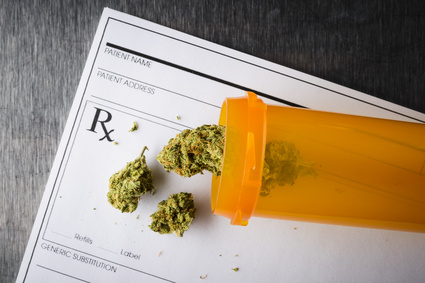 The legalization of medical marijuana (cannabis) has expanded throughout the U.S. Some states now allow for recreational use while Canada is approaching complete legalization for any reason. As of November 2017, 29 states and Washington DC have passed laws permitting the use of marijuana for medicinal purposes. Alaska, Washington State and Oregon led the way beginning in 1998. Laws vary so it is important to know the rules and restriction in your state if you wish to choose this pain treatment option. Learn more.
The legalization of medical marijuana (cannabis) has expanded throughout the U.S. Some states now allow for recreational use while Canada is approaching complete legalization for any reason. As of November 2017, 29 states and Washington DC have passed laws permitting the use of marijuana for medicinal purposes. Alaska, Washington State and Oregon led the way beginning in 1998. Laws vary so it is important to know the rules and restriction in your state if you wish to choose this pain treatment option. Learn more.
However, it is just as important to follow the research. A critical report was released in January 2017, by the National Academies of Sciences, Engineering, and Medicine. They released their findings from an ad hoc, expert committee whose charge was to develop a comprehensive, in-depth review of the most recent evidence regarding health effects of using cannabis and cannabis-derived products. Their work was supported by a group of federal, state, philanthropic and nongovernmental organizations. This report: The Health Effects of Cannabis and Cannabinoids: The Current State of Evidence and Recommendations for Research, includes nearly 100 research conclusions along with recommendations to expand and improve the quality of cannabis research and address the current barriers facing cannabis research.
This is an interesting read and a great place to start to improve your knowledge.
Did You Know?
The following therapeutic effects in adults were cited where cannabinoids had modest relief:
- Effective anti-nausea agent: reduces nausea and vomiting for those undergoing chemotherapy for cancer treatment.
- Effective pain relief agent: reduces pain levels for those experiencing persistent pain.
- Effective anti-spasmodic agent: eases multiple sclerosis-related spasticity for those living with MS.
All other conditions evaluated were found not to garner enough information to appreciate their beneficial effects at the present time. Clearly, more research is needed.
Issues which surround the serious side effects that many clinicians worry about were also addressed:
- Cardiometabolic Risk: The evidence is unclear if and how cannabis use is associated with heart attack, stroke and diabetes.
- Respiratory Disease: It was noted that smoking cannabis on a regular basis is associated with chronic cough and phlegm production. Once smoking is stopped these conditions are likely to reduce over time. The association with COPD, asthma or worsened lung function was not clear.
- Cancer: The evidence does NOT suggest that smoking cannabis increases the risk for lung, head and neck cancer in adults. There is little evidence that cannabis use during pregnancy is associated with greater cancer risk in offspring. There was modest evidence that one subtype of testicular cancer was associated with cannabis use.
Snapshot of Findings
Many conclusions were made; here are some key points. The pain-related findings are highlighted in green text.
There is conclusive or substantial evidence that cannabis or cannabinoids are effective for:
- Pain treatment for chronic pain in adults (cannabis)
- The treatment of chemotherapy-induced nausea and vomiting (oral cannabinoids) as an antiemetic
- Improving patient-reported MS spasticity symptoms (oral cannabinoids)
There is moderate evidence that cannabis or cannabinoids are effective for:
- Improving short-term sleep outcomes in individuals with sleep disturbance associated with obstructive sleep apnea syndrome, fibromyalgia, chronic pain, and MS (cannabinoids, primarily nabiximol extracts)
There is limited evidence that cannabis or cannabinoids are effective for:
- Increasing appetite and decreasing weight loss associated with HIV/AIDS (cannabis and oral cannabinoids)
- Improving clinician-measured MS spasticity symptoms (oral cannabinoids)
- Improving symptoms of Tourette syndrome (THC capsules)
- Improving anxiety symptoms, as assessed by a public speaking test, in individuals with social anxiety disorders (cannabidiol)
- Improving symptoms of posttraumatic stress disorder (nabilone AKA Cesamet; one single, small fair-quality trial)
There is limited evidence of a statistical association between cannabinoids and better outcomes (i.e., mortality, disability) after a traumatic brain injury or intracranial hemorrhage.
There is limited evidence that cannabis or cannabinoids are ineffective for:
- Improving symptoms associated with dementia (cannabinoids)
- Improving intraocular pressure associated with glaucoma (cannabinoids)
- Reducing depression in individuals living with chronic pain or MS (nabiximols, dronabinol AKA Marinol, and nabilone)
There is so much more in this report to savor. I hope I at least stirred your curiosity. Please take the time to read the full report.
Watch for more information about cannabis in future blogs. Share a shout out on the discussion board, if you have questions, concerns, tips or experiences.

I would like to know if others are considering or currently using this for pain relief? If yes, is it easier to obtain compared to other pain relievers?
My mum is currently using CBD for pain relief. She has severe back/neck pain since an accident many moons ago and her prescribed meds make her very tired and disorientated (almost drunk). I hunted down some CBD as a last resort and she is now starting to wean off her prescribed meds.
Hi ;
I also am using prescription marijuana. I just started this weekend. I’m not having any luck. I see that your mom started in October. How is she doing? is it working out for her?
RichDee
I have been a medical cannabis patient for several years now. If anyone wants any advice as to what to use, or wants to know what I use, please message me. I use tropicals and flower/cbd isolate.